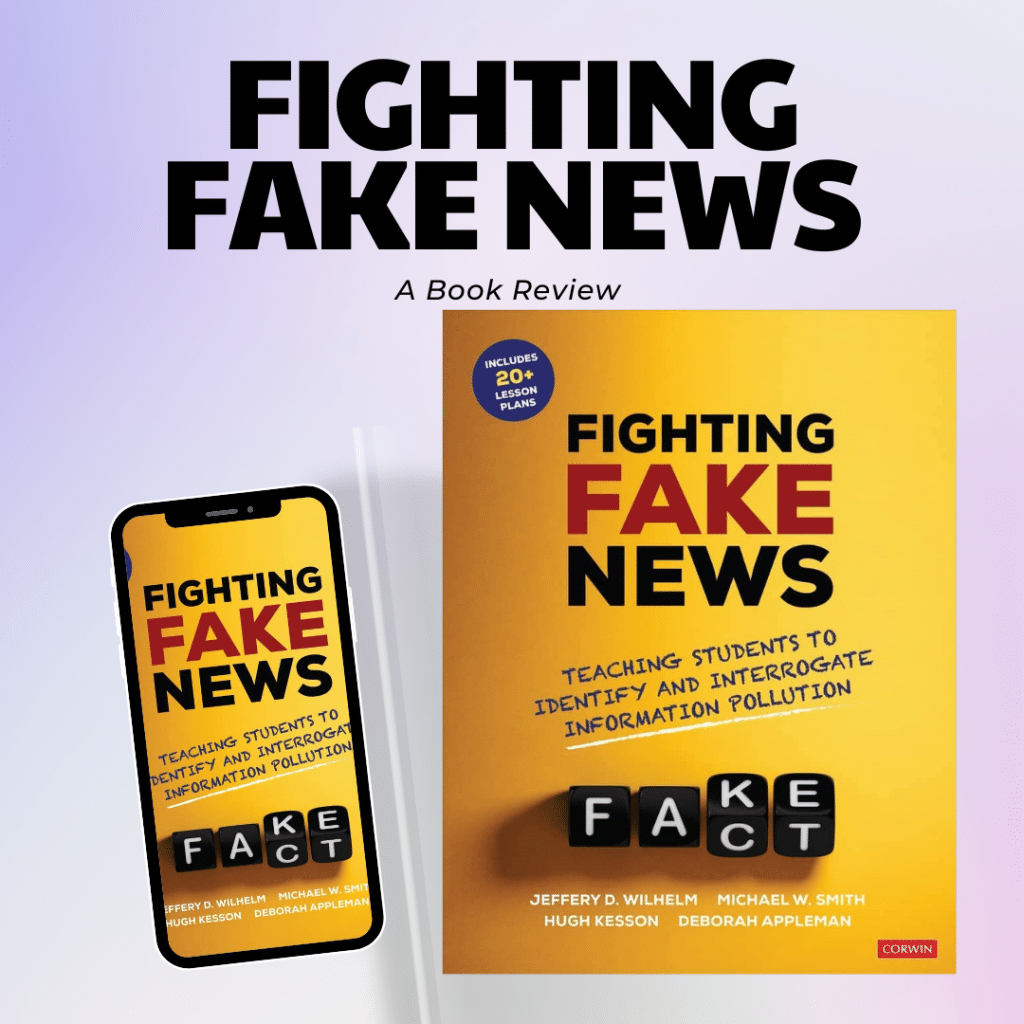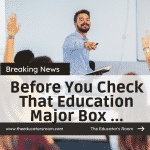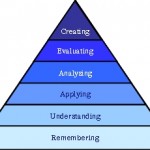From political conspiracy theories to the drama of who’s dating who in the celebrity sphere, fake news is all around us. It bombards us from the magazine racks in the grocery store checkout lanes. It pops up on our social media feeds, enticing us to click to see more. Sometimes it even makes it to national news channels from sources we thought we could trust. Like an early Monday morning after weekend bliss, there’s no stopping it. But according to some scholars, there may be a way to lessen its impact. In this article, I review this theory in Fighting Fake News, a book that was written to enlist teachers in the fight against information pollution in the digital age.
Background
Fighting Fake News is a 250-page book detailing information pollution in the digital age, its detriment to society, and how teachers, primarily English Language Arts (ELA) teachers, can help stop the spread of fake news by teaching students critical reading and thinking skills. These skills are designed to help students, now and in adulthood, discern reliable sources and verifiable facts from propaganda, biased opinions, or outright lies.
Chapter topics in the book cover discovering personal biases, the importance of evaluating evidence and research, and teaching point of view in digital media, among others. Although the sections that teach reliable research methods will benefit teachers and students of all subjects, ELA teachers in particular, will appreciate the authors’ applications of literary topics in order to discern fact from opinion and truth from lies. Some of these literary topics include reading articles through critical literary lenses and determining the reliability of an article’s narrator just as one determines the reliability of a narrator in a book like Mark Twain’s The Adventures of Huckleberry Finn.
Thoughts
While much of the information presented in the book is interesting, the information can get repetitive throughout the chapters. One example of this phenomenon is the overstated fact of fake news being designed to manipulate. As a busy professional, the repetitiveness of the book made choosing to read it a difficult choice. On the one hand, I wanted to gain valuable insight into information pollution, but on the other, I didn’t want to read virtually the same sentence again and again. Additionally, the scenarios at the beginning of the chapters made the book difficult to pick up. The scenarios were designed by the authors to provide “real-life” examples of the issues caused by fake news; however, the awkward dialogue and trite stories truthfully made me cringe and roll my eyes in frustration.
Apart from providing information on fake news, the book also offers a plethora of lesson plans, handouts, activities, and videos so that teachers can implement the material in their classrooms. While most of these lesson plans are engaging and easy to follow, teachers should keep in mind that not all of the work is cut out for them. Teachers will still need to find time to squeeze in these lessons and scaffold the lessons to fit their unique group of student’s ages and capacities.
Teachers should also keep in mind that the authors’ suggested times for the lessons may not be accurate. For example, one lesson marked for two 55-minute periods or one 80-minute period requires an inordinate amount of work, including teaching historical context, watching a video, reading Jonathan Swift’s A Modest Proposal, learning about four critical literary lenses, a group discussion, a class discussion, an individual reflection, sharing of the individual reflections, research, and an exit ticket. Even the most well-behaved, organized class would have trouble completing that amount of work in such a short period of time. While scaffolding the material, teachers could decide what parts of the lesson to keep, skip, or perhaps assign as homework before and after the lesson.
Recommendation
Overall, I do recommend reading Fighting Fake News, particularly for secondary or even post-secondary ELA teachers. Despite the book’s shortcomings, there is good information to be gleaned and applied in the classroom so that future generations will be critical thinkers and responsible citizens.







